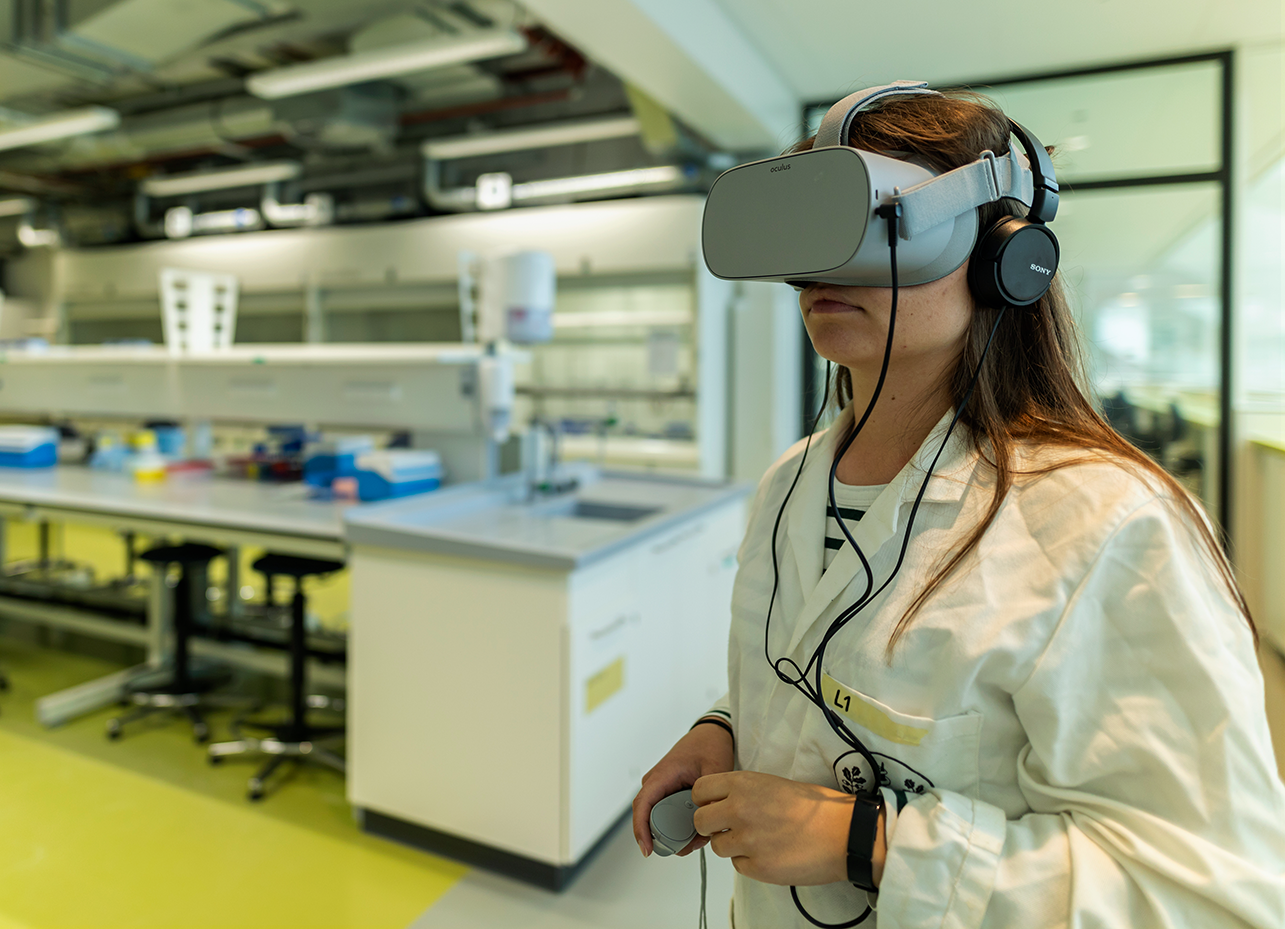Extended Reality (XR) is gaining ground in academia, both in research and education. Universities are holding virtual court sessions, researchers are gaining new insights into the gaze behaviour of children with ADHD, and medical students use the HoloLens to learn about CT-scans of transplant patients.
However, many challenges still exist when it comes to the state of XR in academia. These relate to a wide variety of topics, each with their own set of complexities.
The challenges of XR in academia
The lack of widely shared educational XR apps
As stated before, many universities, colleges, and research institutions have developed and are developing useful new XR applications. However, they fail to find their way into other institutions, because sharing is not a priority for the creators. This is a pity, because many apps could be implemented nation- or even worldwide. Institutions are often not unwilling to share their apps, but they don’t have time to, or they don’t want to go through the trouble of disseminating their apps. There is also an insecurity about how to protect apps against things like IP infringement. Finally, even though creators may be eager and willing to share their apps, they may simply have trouble finding other interested parties, since academia is such an expansive field.
Developing XR applications efficiently
It makes no sense to reinvent the wheel. Already, we’ve seen duplicate apps, developed by several research and educational institutions. Not only is this a waste of resources, but also a missed opportunity to improve on existing material, or to find out whether an app holds up in a (slightly) different setting or course.
What is extended reality?
Extended Reality is an umbrella term for technologies which enrich reality, or which transport users to a different reality altogether. XR encompassed current technologies such as virtual reality and augmented reality, but offers room for new developments of which we cannot yet conceive. It also acknowledges the nuances between existing categories, such as that VR can contain real-life augmentations (clumsily called ‘augmented virtuality’).
Infrastructure
Practical issues arise when rolling out XR experiences and technology. How do you manage hundreds of headsets? Does every student need one? Are the high costs of some headsets warranted? Which department should be responsible for maintaining XR equipment, or for developing XR experiences? What kind of headset is most suitable for this or that kind of education?
Implementation in curriculum or study
Currently, no clear information exists on when and how to implement XR in a course or research study effectively. There are some preliminary research findings, but we are simply too far ahead of the curve to be able to lean on well-established practices. Together we must figure out how to use these new technologies.
The fragmented financing structure of app development
App development is its own distinct discipline, just like teaching or performing research. In order to really move forward with XR, structural financing needs to be in place, instead of the haphazard web of financing we’re currently seeing.
Privacy, (data) responsibility and ethical concerns
If XR experiences are to be used in academia, they must adhere to academic standards and values. Furthermore, participants’ and students’ wellness must be taken into account, because XR are very potent and can affect the user emotionally. Currently, there are no standards specific to XR experiences in academia, leading to uncertainty about its use.
The need for scientific data about the effects and effectiveness of XR
There is still a lot we don’t know about the effects and effectiveness of XR. If we aim to implement XR in our research and curriculum, there must be some knowledge about what it does to its participants, and for its participants. Does an XR experience really enhance students’ learning, and if so, how? Can we label data gained through XR as scientifically valid? What kind of questions should we ask in order to be able to use these new tools effectively?
The need for an XR network

These challenges are difficult to tackle alone. Moreover, working to solve them together will produce broadly shared results. Therefore, it’s essential to create a community that actively exchanges knowledge and content about using XR in academia.
XR ERA aims to bring people from different educational and research institutions, disciplines, and industry together, both online and offline. We want to stimulate the active sharing of knowledge and applications, to drive community development. Ultimately, XR ERA aims to enhance education and research in academia by making use of what XR has to offer.
XR ERA is an open, independent platform. Are you a researcher, developing XR experiences for your study? Are you an innovation manager at a university? Or are you just a curious professional working in this field? You’re welcome to join us!




